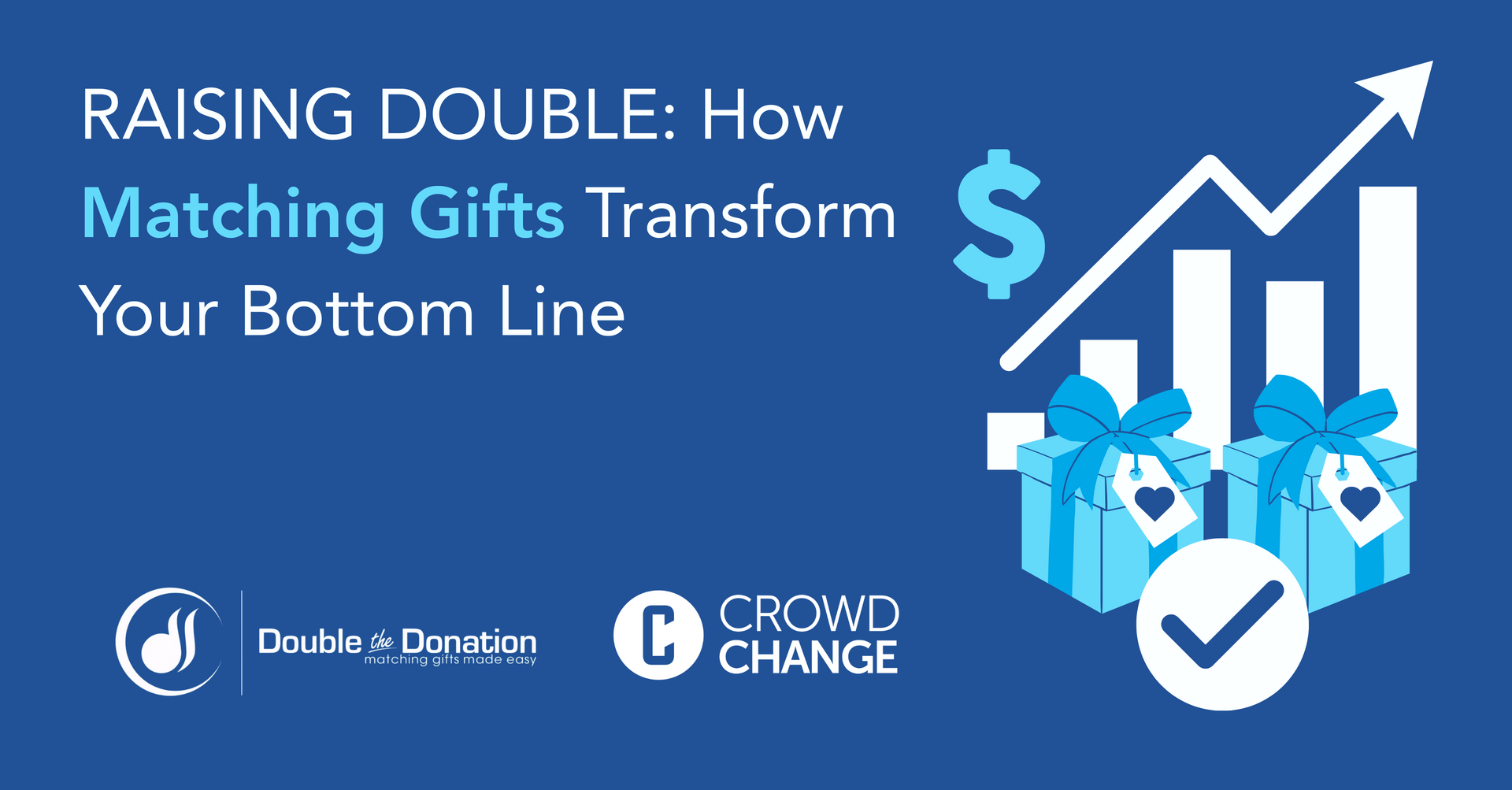This is a subtitle for your new post

What if every donation your nonprofit received had the potential to be doubled, without asking donors to give more? That’s the power of matching gifts.
However, every year, billions of dollars in corporate matching gift funds go unclaimed simply because donors don’t know their employers offer them, or nonprofits don’t make it easy to participate.
In this post, we’ll explore how matching gifts work, why so much potential goes unused, and how your organization can integrate them into your fundraising strategy to raise more, without more asks. We’ll cover:
- What are matching gifts?
- The untapped potential of matching gifts
- Bottom-line impact: Real results from matching gifts
- Integrating matching gifts into your fundraising strategy
For mission-driven organizations, matching gifts represent a massive missed opportunity. The programs can not only increase donation revenue but also deepen donor engagement and loyalty. Let’s dive in with the basics!
What are matching gifts?
Matching gifts are a type of corporate giving program that allows employees to amplify their charitable donations, often doubling or even tripling the impact of their original gift. When an employee makes a donation to a nonprofit, their employer may "match" that donation with an equal or greater contribution, depending on the company’s policy.
Here’s how it typically works:
- An employee donates to a registered nonprofit.
- The employee submits a matching gift request to their employer, usually through an online portal or paper form.
- The employer verifies the donation and the nonprofit’s eligibility.
- The employer sends a matching donation to the nonprofit, effectively doubling the original gift.
Most matching gift programs follow a 1:1 match ratio, but some companies go further, offering 2:1 or even 3:1 matches. Donation minimums and maximums vary, and some companies also match gifts from retirees and spouses.
The untapped potential of matching gifts
Despite the powerful impact of matching gift programs, the vast majority of eligible donations remain unmatched, resulting in billions of dollars being left on the table each year.
According to recent research, an estimated $4–7 billion in matching gift funds go unclaimed annually in the U.S. alone. Why? Most donors are unaware that their employer offers a matching program, and many nonprofits fail to actively promote or facilitate the process. In fact, 78% of donors are unaware if their company matches gifts, and even those who are aware often find the process unclear or cumbersome.
This gap between potential and reality represents a huge missed opportunity. For nonprofits, it’s a chance to increase fundraising revenue without asking supporters to give more. For donors, it’s a way to maximize the value of every dollar they contribute. And for companies, it’s an opportunity to deepen employee engagement and demonstrate a real commitment to social good.
The good news? This is one of the most fixable fundraising challenges. By raising awareness and streamlining the matching process, nonprofits can unlock this hidden revenue stream—and turn a single donation into something far greater.
Bottom-line impact: Real results from matching gifts
Matching gifts aren’t just a fundraising bonus—they can be a game-changer for your nonprofit’s bottom line. When effectively promoted and integrated into your donation process, matching gifts can significantly boost revenue, increase donor retention, and enhance campaign performance.
Consider this: organizations that actively promote matching gifts can see up to a 71% increase in response rate and a 51% increase in average donation size. Why? Because donors are more likely to give—and to give more—when they know their contribution will have double the impact.
Real-world organizations illustrate this clearly, with Double the Donation’s case studies providing insight into the following examples:
- A mid-sized education nonprofit achieved a $50,000 revenue increase in one year by simply adding a matching gift search tool to its donation page and incorporating follow-up emails.
- One national health-focused nonprofit found that 30% of eligible donors submitted matches after being properly informed and reminded, turning $100,000 in original gifts into over $180,000 in total donations.
- Even small nonprofits have reported matching gift revenue making up 10% or more of their annual individual donations once they implemented basic awareness and automation strategies.
Beyond the numbers, matching gifts also build trust and loyalty. Donors feel more confident when their employers support their giving, and they’re more likely to return knowing their impact is amplified.
The takeaway? Matching gifts don’t just support your mission—they directly strengthen your fundraising results and long-term sustainability.
Integrating matching gifts into your fundraising strategy
To truly unlock the power of matching gifts, they need to be more than an afterthought—they should be a built-in component of your overall fundraising strategy. When thoughtfully integrated, matching gifts can boost every campaign you run and deepen your donor relationships over time.
Here are several practical ways to weave matching gifts into your approach:
1. Promote Matching Gifts Early and Often
Mention matching gift opportunities at every stage of the donor journey—from your website and donation forms to email receipts and thank-you pages. The more visibility you give to matching gifts, the more likely donors are to take action.
2. Use Matching Gift Tools
Platforms like Double the Donation can automate matching gift identification and follow-up. These tools integrate with your CRM and donation tools, too, making it easy for donors to search for their company’s program right at the point of donation.
3. Create Targeted Follow-Ups
After someone donates, send a follow-up email specifically about matching gifts. If possible, include employer-specific instructions or a direct link to start the match request. Personalized, well-timed nudges often lead to higher submission rates.
4. Make Matching Part of Campaign Planning
Incorporate matching gift promotion into your most significant fundraising moments—like Giving Tuesday, year-end drives, and peer-to-peer campaigns. Even better, set up temporary, exclusive matching challenges sponsored by companies to drive urgency and excitement.
5. Train Your Staff and Volunteers
Ensure your development team, donor services, and volunteers understand how matching gifts work and can answer donor questions. Internal alignment boosts consistency and effectiveness across all touchpoints.
6. Report Impact Back to Donors
When a match comes through, let the donor know. Share stories, numbers, or thank-you notes that show how their gift—and their employer’s support—made a tangible difference. This closes the loop and reinforces the value of participating.
By making matching gifts a routine part of your strategy rather than a one-off appeal, you create a scalable, sustainable source of revenue. And just as importantly, you make giving more rewarding for the people who support your mission.
Matching gifts are one of the easiest, most cost-effective ways to increase your fundraising revenue. By making donors aware of their matching opportunities and removing barriers in the process, your organization can turn single gifts into doubled impact.
Whether you're running a year-end campaign or seeking to enhance donor retention, matching gifts should hold a central position in your strategy. Don’t leave money on the table—start unlocking the full potential of corporate matching programs with CrowdChange and Double the Donation, and watch your bottom line grow.



